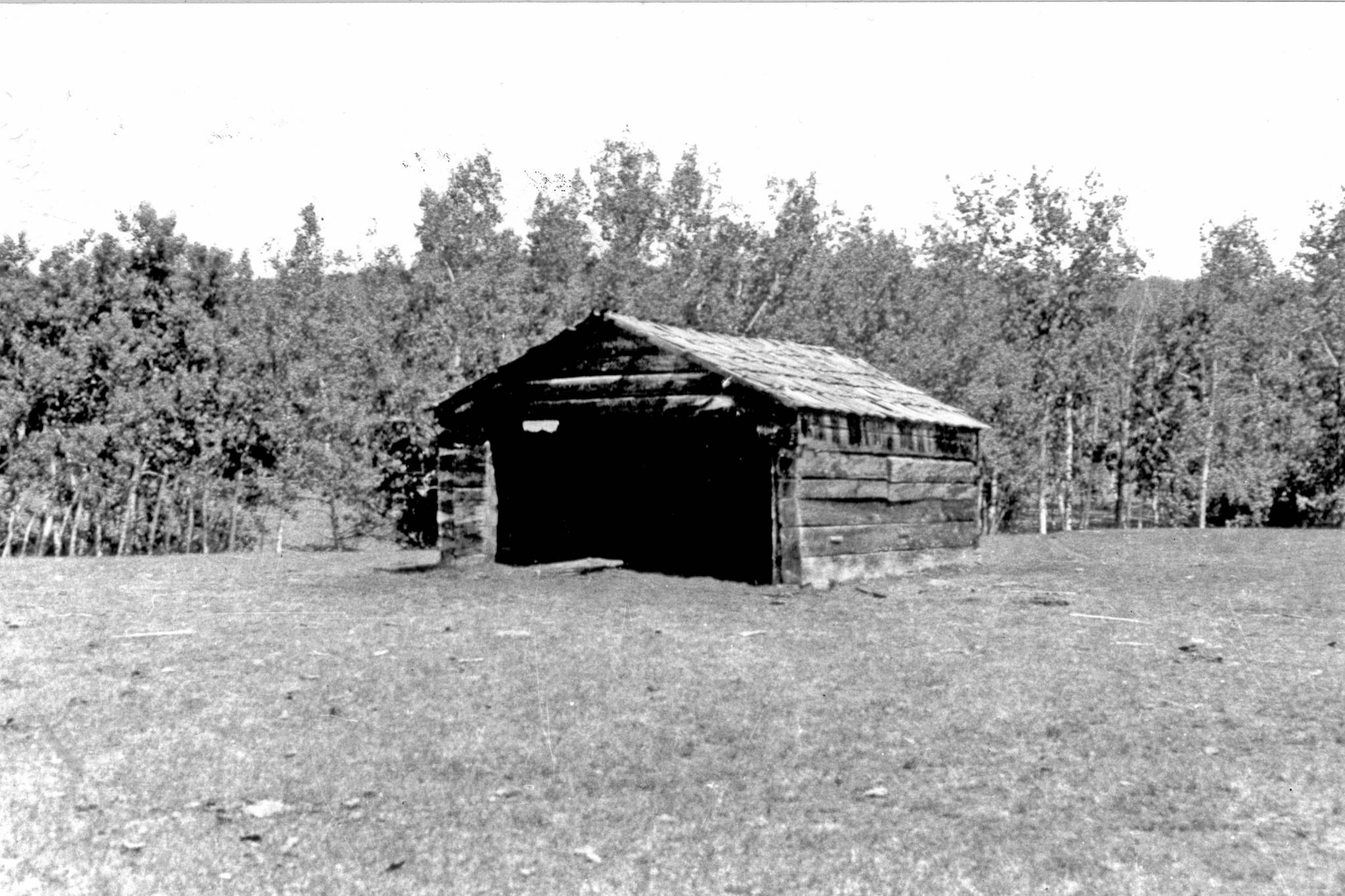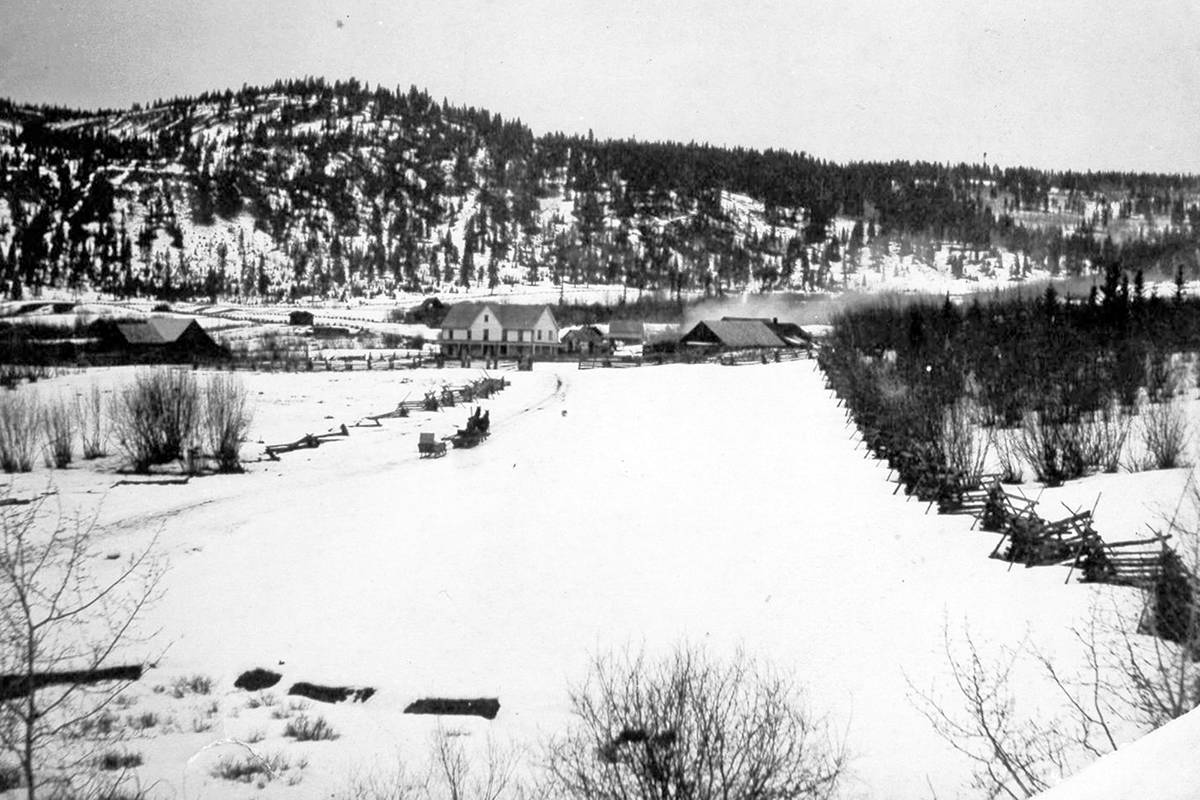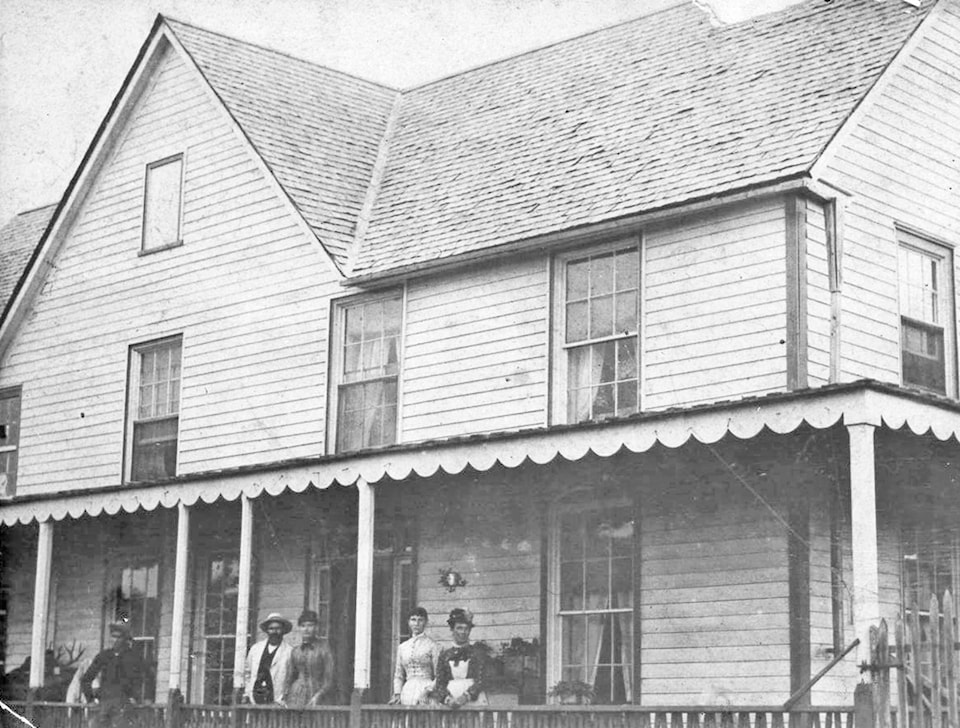The Dairy Fields in Williams Lake received an uptick in attention this past spring and summer as families with young children flocked to view hundreds of thousands of tadpoles hatching in the settled water of the area.
Hiking the trails today, it’s hard to believe this parcel of land that had once played host to the beginnings of the original Williams Lake in Glendale, has been lost to the sands of time.
Once the original Williams Lake townsite, cemetery and ranch, and the Williams Lake Catholic Mission, the land — known initially as Missioner Creek — also housed a historic trail, courthouse, school, jail, roadhouse and agricultural buildings.
The Museum of the Cariboo Chilcotin’s historical recollection compiled of the area dates back 3,500 years ago where remains of an ancient deer tanning camp and fires, and a village likely nearby, have been dated.
The land’s history is an interesting one and, the ‘Dairy Fields’ moniker’s inception may surprise you.
Local naturalist Ordell Steen, in past years, has led tours through the area discussing its history from a Secwepemc village site and burial ground, and its early use as the Hudson’s Bay Company’s brigade trail and settlement.
Here is a timeline of recorded events based on Steen’s research which, ultimately, shaped the city of Williams Lake into what it is today:
1800 to 1850s
From the early 1800s up until 1860, a Secwepemc (Shuswap) village was present, along with a burial ground. Columneetza and Wesemey7est (William) were chiefs in the mid 1800s, with Chief William noting the village was present for more than 500 years by 1842.
The village probably included log houses and pithouses, as well as gardens. Cemeteries (more than 19 graves in one) and apparent house depressions are present, while the known cemetery is a registered archaeological site, along with other graves discovered.
From 1821 to 1860 the Hudson’s Bay Company (HBC) fur brigade trail passed through the area. The HBC brigade trail from Fort Alexandria to Fort Thompson (Kamloops) passed through the Missioner Creek area and likely up and down the hill behind the present Williams Lake Stockyards.
In August of 1842, Father Modeste Demers visited the Shuswap village near Missioner Creek. His last visit was in January of 1843.
READ MORE: Lee Sollenberger enjoys Cariboo life after long career in motion picture industry
Demers, an Oblate priest, was the first representative of a Christian church to arrive in the B.C. Interior north of the Okanagan. He travelled to the area with the HBC brigade, alongside Peter Ogden, to Fort Alexandria and made two visits to the Secwepemc who lived in the area.
By the fall of 1842 a log church had been built by Chief William at the request of Father Demers, and is one of the first two Christian churches built in the Interior of B.C. and the first church built in a non-European settlement in B.C. (the other was in Fort Alexandria).
Demers held a service in January of 1843, where Missioner Creek got its name from Demers’ mission and the church. The church was constructed near Chief William’s home.
1850s to 1861
In 1855, smallpox killed many people at the village.
Apparently arriving in clothing and blankets brought by Chief William’s group from Fort Thompson to the village.
His oldest son is alleged to have died of smallpox as a result.
By April of 1860 John Telfer, along with Thomas Davidson as his agent, preempted land along Missioner Creek and is recognized as one of the first European settlers in the area. Davidson was granted permission by Chief William to build a cabin near the village, but then pre-empted/claimed the land of the village in contravention of pre-emption rules, allegedly drove the Secwepemc off and established his own fields and a stopping house.
His farm, meanwhile, was known to produce excellent crops and the area became known as Mission Ranch.
Chief William’s band was left with no land because most of the Williams Lake valley became quickly pre-empted by settlers.
Phillip Nind, appointed the first gold commissioner for the region by Governor James Douglas, also arrived at Davidson’s ranch with his constable William Pinchbeck in August of 1860. Although initially intending to establish an office at Alexandria, they selected an area near Missioner Creek for the construction of a government house and courthouse.
Nind, after being instructed by Douglas to establish a reserve for the Williams Lake band, failed to do so.
In 1861 Pinchbeck built his first stopping house which included a saloon near the brigade trail in the northern part of the Dairy Fields.
Nind, meanwhile, received permission from Governor Douglas to build a jail at the site of his choosing in 1861,
while Pinchbeck had already cut and squared logs, likely with the help of Davidson.
July of 1861 saw John Telfer purchase 160 acres adjacent to the north side of his previous pre-emption, expanding the Mission Ranch. Davidson acted as an agent for Telfer, with Pinchbeck later stating that 320 acres of land owned by Telfer were sold to Davidson.
By November of 1861, Thomas Meldrum pre-empted 160 acres adjacent to the east side of Mission Ranch, which included the site of the church built in 1842.
Later that year, the gold commissioner’s office was moved to Quesnelle Forks, and Nind is recorded as leaving the area, while Pinchbeck remained at the site and began acquiring land and building a farm.
In September of 1861, the Telfer/Davison Mission Ranch was sold to Thomas Menefee and Dudley Moreland for $15,000, which also included Davidson’s property at the present Stampede Grounds. Menefee and Moreland occupied a home just west of Missioner Creek.
1862 to 1884
Pinchbeck, meanwhile, continued to accumulate land, pre-empting another 160 acres north of the Meldrum pre-emption.
During the spring of 1862 Marion Woodward became a partner with Menefee in the Mission Ranch and Roadhouse.
For $8,000 Woodward purchased Moreland’s share of the ranch and roadhouse.
From 1862 to 1863, the smallpox epidemic killed many Secwepemc people at Pellkekiki and Yucw, in the surrounding areas and region.
Roughly half of the First Nations people in the region were killed — many dying in pithouses or along trails and Secwepemc villages on the west side of the Fraser River.
1863 saw Judge Matthew Begbie sentence four Secwepemc men to death for the killing of two Italians. They were hanged in the jail at the Dairy Fields. The unmarked graves of the Secwepemc men are believed to buried nearby, somewhere around the southeast corner of the Comer Ranch.
Between the years of 1863 to 1884, Meldrum’s preemption was transferred to Pinchbeck in March of 1866, where he built his second stopping house near Missioner Creek and, alongside William Lyne, built a large frame ‘Upper House’ near Missioner Creek.
During this time Pinchbeck lived with Chulminick — she was related to Chief William. Pinchbeck’s place, meanwhile, became a well-known stopping house and place where many gold miners spent the winter.
In May of 1878 Pinchbeck also purchased the Menefee/Woodward property today known as the Mission Ranch, which also included property at the east end of the lake.
Some time between 1879 and 1884 the second Chief William dictated a letter published in the British Daily Colonist stating the plight of his people. The Sugar Cane ranch was purchased by the federal government for the Williams Lake band.
In his letter, Chief William stated their land had been taken by white men, and that his people were now starving without land. He said his people would rather die in war than die of starvation, however, the band lived temporarily at the St. Joseph’s Mission property until the Sugar Cane Reserve was established in 1881.
1885 to 1936
By 1885, Pinchbeck had acquired all property within the developing area and, in addition to acquiring Telfer and Meldrum’s preemptions and purchases, he also purchased 20 acres of land adjacent to the northwest corner of his 1862 parcel of land near his stopping house.
Pinchbeck then moved with his English wife to his ‘Lower House’ near the lake — later known as Borland House.
On July 30, 1893, Pinchbeck died with a large, unpaid debt and, consequently, his wife returned to England.
The Pinchbeck ranch, including the Missioner Creek area, was taken over by Western Canadian Ranching Co., which owned the Gang Ranch, for payment of debts owed to them by Pinchbeck. The ranch was then leased out to Joseph Patenaude while it was for sale.
In 1899, Robert Borland bought Pincbheck’s Ranch. Borland, the owner of the 150 Mile Ranch alongside Vieth, moved into the Lower House built by Pinchbeck in 1884 at the Stampede Grounds. That same year Borland leased the Upper House to Mike Minton, which was occupied by Bill, Tommy and Mamie Comer.
The Upper House then became known as Comer House, where the Comer brothers farmed the site until 1910.
1913 saw the entire Borland Ranch, including the Missioner Creek area, sold to the Pacific Great Eastern Railway (PGE). The PGE, which became the BCR in 1972, owns a portion of the ranch area at present, with most of the remainder owned by Jackpine Forest Products Ltd., West Fraser Mills Ltd. and the City of Williams Lake.
The Comer House was mostly unoccupied after the Comer brothers left until 1919. From 1919 to 1925 the Comer House was occupied by Harry Curtis’s family and Percy Clarke’s family.
READ MORE: From humble beginnings - Williams Lake’s movie theatres have rich history
It was later torn down in 1925, apparently leaving the original log portion intact, which was Pinchbeck’s bar and, by this time, most of the log buildings at Mission Ranch had been torn down.
Then, for 10 years, Richard and Sarah Kinvig leased and farmed the area, living in the two-storey log portion of the old Comer House, before others briefly occupied the area until 1947.
1947 to Present and the origins of the name: ‘Dairy Fields’
In 1947, Lionel and Edna Singlehurst leased the area from the PGE and established Primrose Dairy, providing milk to the town of Williams Lake. The area has since been known by many as the ‘Dairy Fields,’ however, remains of the old buildings still exist, including the main barn, pasteurization/separating shed and house.
The old log jail was torn down in 1952 and burned.
Originally built by Pinchbeck in 1861, it had been converted to a shed by cutting out the front.
By 1960, the buildings had been torn down or were now little more than rotting logs. Adolph Beyerle leased the area for his dairy farm and home.
The site, including burial grounds now registered under Archaeological and Historical Site Protection Act in 1975, saw Merrill and Wagner Ltd., who planned an extension of the lease, halted after human bones were discovered partially excavated in the area.
An archaeological report recommended no further disturbance, except grazing, be permitted.
In the late 1980s a fibreboard plant was proposed for the area but terminated in the 1990s. Archaeological investigations revealed several significant prehistoric and historic remains and seven archaeological sites were registered in the area.
By February of 1994 the Williams Lake Indian Band filed a Village Site claim with the Specific Claims Branch and, in February of 2018, the Supreme Court of Canada accepted the claim by the Williams Lake First Nation that they were wrongfully dispossessed of their land.
- Summarized with many sources by Ordell Steen and files from the Museum of the Cariboo Chilcotin
greg.sabatino@wltribune.com
Like us on Facebook and follow us on Twitter



